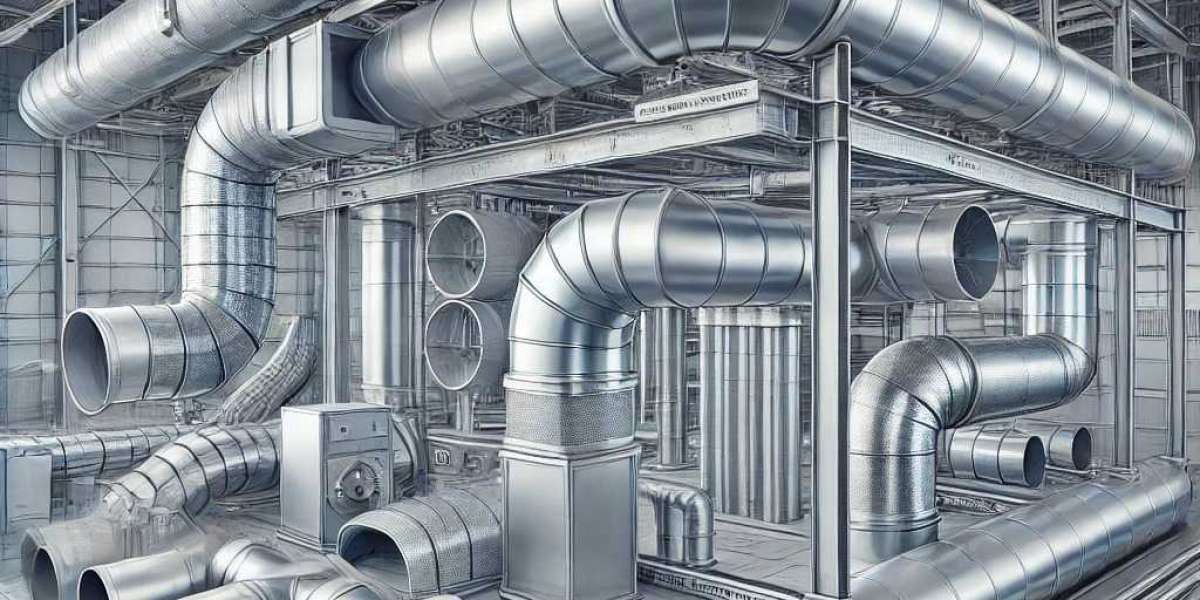Selecting the right ductwork system for HVAC (Heating, Ventilation, and Air Conditioning) installations is crucial for ensuring optimal performance, energy efficiency, and air quality in buildings. Ductwork plays a vital role in distributing air from the HVAC unit to various spaces, so careful consideration must be given to the design, material selection, size, and installation of the system. Here are the key factors to consider when choosing the right ductwork system:
1. Duct Sizing
Proper duct sizing is fundamental to the efficiency and effectiveness of the HVAC system. Undersized ducts can cause restricted airflow, leading to inefficiencies, higher energy consumption, and increased strain on the HVAC unit. On the other hand, oversized ducts may lead to uneven distribution of air, causing discomfort in specific areas. Accurate load calculations should be performed to determine the required airflow (measured in cubic feet per minute, or CFM) for each space. The size of the ductwork must be proportional to the air volume that needs to be delivered.
2. Material Selection
Ductwork materials are another important consideration. The most common materials used for ductwork are galvanized steel, aluminum, and flexible ductwork.
- Galvanized steel is highly durable and resistant to corrosion, making it a popular choice for long-lasting installations.
- Aluminum is lightweight and easier to install, but it may not be as durable as steel.
- Flexible ducts are often used in residential applications for short runs due to their ease of installation, but they may reduce airflow efficiency over time due to bends or kinks.
The choice of material will depend on the specific application, environmental conditions, and cost considerations.
3. Duct Design and Layout
A well-designed duct system ensures even air distribution throughout the building. Factors such as the number of turns, bends, and branch connections must be minimized to reduce air resistance and friction losses. A good design prioritizes straight and direct paths for airflow, which helps in maintaining energy efficiency. Poorly designed ductwork can result in pressure imbalances, leading to hot or cold spots, noisy airflow, and higher operating costs.
4. Insulation and Sealing
Insulating and sealing ductwork is essential to prevent energy losses and maintain temperature control. In unconditioned spaces like attics or basements, uninsulated ducts can result in significant heat gain or loss, reducing the efficiency of the system. Proper sealing with materials like mastic or metal tape prevents air leaks, ensuring that the conditioned air reaches its intended destination. Leaky ducts can account for up to 30% of energy loss in an HVAC system.
5. Air Quality and Ventilation
Ductwork systems not only provide heating and cooling but also play a crucial role in maintaining indoor air quality. Choosing ductwork that is easy to clean and resistant to mold growth helps improve the air quality within a building. Additionally, adequate ventilation is essential to remove stale air and bring in fresh air, especially in tightly sealed modern buildings.
6. Noise Control
Ducts can sometimes carry noise from the HVAC system or create noise due to high-velocity airflow. Proper duct sizing, the use of sound attenuators, and avoiding abrupt transitions in duct design can help minimize noise. Flexible duct sections can also be added in specific areas to reduce vibration and sound transmission.
7. Compliance with Codes and Standards
When selecting ductwork, it’s important to adhere to local building codes and HVAC standards, such as those provided by the ASHRAE (American Society of Heating, Refrigerating, and Air-Conditioning Engineers). These codes ensure that the duct system meets safety, performance, and environmental standards.
8. Cost Considerations
While it may be tempting to cut costs on materials or installation, investing in high-quality ductwork and proper design can lead to long-term savings through lower energy bills and reduced maintenance. An efficient ductwork system ensures that the HVAC system operates at peak efficiency, prolonging its lifespan.
Place your online orders: https://www.ductingsuppliesuk.com/shop-online
In summary, selecting the appropriate ductwork system involves careful planning and consideration of factors like sizing, material, design, insulation, and air quality. A well-chosen and installed duct system ensures that the HVAC system operates efficiently, delivering consistent comfort, minimizing energy consumption, and maintaining high indoor air quality.








